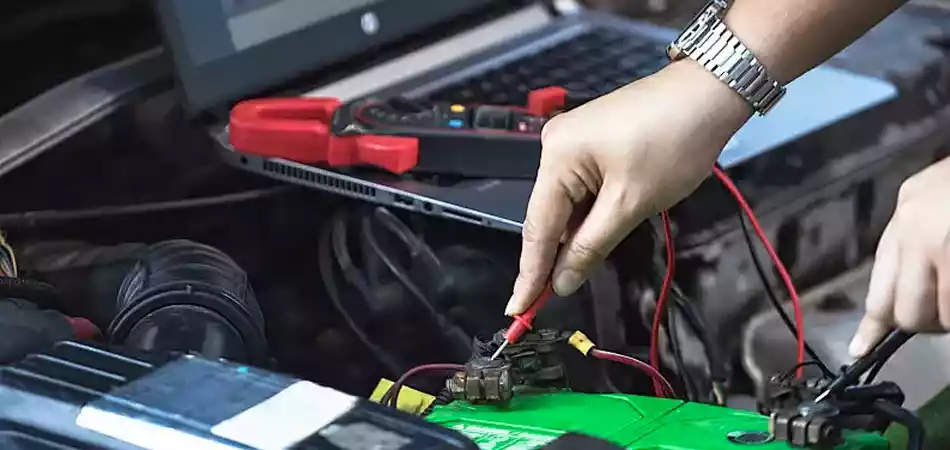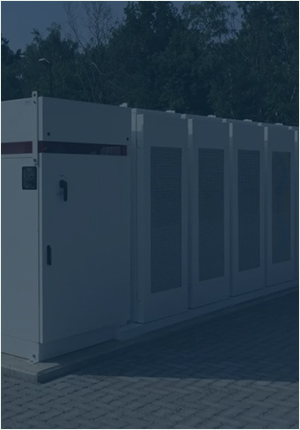2024-12-17 Author : CXJPowers
LiFePO4 Lithium Battery Voltage is an important indicator that affects the performance of lithium batteries. Lithium batteries are widely used because of their stability, safety, long life and excellent performance, such as electric vehicles, children's toys, solar energy storage systems, RVs, etc. Now most people's lives are inseparable from lithium batteries. Understanding LiFePO4 Lithium Battery Voltage can help users use batteries more safely and how to maintain and extend the life of batteries.

When people began to pay attention to the use of renewable energy, solar energy is a pollution-free and infinitely abundant energy source, and the home solar power system was born. Humans invented the solar energy storage system to convert solar energy into electrical energy and store it for future use. With the development of battery energy storage technology, CXJPowers has launched a variety of home ESS battery products and kits, which are welcomed by more and more customers.
LiFePO4, or Lithium Iron Phosphate batteries, exhibit a unique voltage profile when compared to other lithium-ion batteries. The performance, capacity, and safety of these batteries are closely tied to their voltage levels. Typically, a fully charged LiFePO4 cell operates at approximately 3.2 volts, but this value fluctuates with the state of charge. For optimal usage and maintenance, it's crucial to be familiar with the complete range of voltages - from the fully charged state, which can reach 3.4 to 3.6 volts, to the fully discharged state, which is usually between 2.5 and 2.8 volts. Given the battery's relatively narrow operating voltage window, careful monitoring is necessary to avoid overcharging or over-discharging, both of which can compromise battery longevity or integrity.
What is the voltage of a 48V (51.2V) LiFePO4 Battery?
The voltage of a 48V LiFePO4 (Lithium Iron Phosphate) battery typically refers to its nominal voltage and its fully charged or fully discharged voltage range.
Nominal Voltage: This nominal voltage is derived from the average voltage of the cells in the pack. Since each LiFePO4 cell has a nominal voltage of around 3.2V, a 48V system usually consists of 16 cells in series (16 × 3.2V = 51.2V nominal).
Fully Charged Voltage: A fully charged LiFePO4 cell has a voltage of around 3.65V, so the fully charged voltage of a 48V system (16 cells) is about 58.4V (16 × 3.65V).
Discharged Voltage: A fully discharged LiFePO4 cell should not go below 2.5V (to prevent damage), so the minimum voltage of a 48V system would be around 40V (16 × 2.5V).
The mainly application of 48V LiFePO4 battery is for EV, electric scooter, solar energy storage system, UPS system, other high-power power tools (electric drills, electric saws, etc.), and garden power tools (lawn mowers, electric pruning machines, etc.). The 48V batteries can provide sufficient power output and long-term battery life.
What Voltage is 24V LiFePO4 Battery?
A 24V LiFePO4 (Lithium Iron Phosphate) battery typically refers to the nominal voltage of the battery pack, which is derived from the individual cells that make up the battery.
Nominal Voltage:The nominal voltage of a 24V LiFePO4 battery is typically 25.6V.
A 24V system usually consists of 8 cells connected in series, so the nominal voltage of a 24V LiFePO4 battery is typically 25.6V (8 × 3.2V = 25.6V).
Fully Charged Voltage: The fully charged voltage is approximately 29.2V (8 × 3.65V).
Discharged Voltage:
To protect the battery and ensure longevity, a LiFePO4 cell should not discharge below 2.5V.
The minimum discharged voltage is around 20V (8 cells × 2.5V).
24V is a common battery voltage for some small and medium-sized electric bicycles and electric scooters, so 24V LiFePO4 battery is suitable for daily short-distance travel; it is also widely used in tools such as electric screwdrivers and electric scissors, suitable for household and light industrial use, as well as some small and medium-sized solar energy storage systems.
What Voltage Should A 12V LiFePO4 Battery Have?
A fully charged 12V LiFePO4 (Lithium Iron Phosphate) battery typically has a voltage of around 13.2V to 13.6V when fully charged.
Here's a breakdown of the voltage range for a 12V LiFePO4 battery:
Fully charged: 13.2V to 13.6V
Nominal voltage (typical operating range): 12.8V
Low voltage cut-off (to avoid damage): Around 10.5V to 11.0V (depending on the battery's design and the Battery Management System or BMS)
It's important to note that the exact voltage can vary slightly based on the specific battery brand or model, but this range is common for most LiFePO4 batteries.
12V LiFePO4 batteries are widely used to replace traditional car starting batteries, providing more efficient energy storage and use; the power supply systems of vehicles such as RVs and campers usually use 12V batteries, which are suitable for smaller power household devices, and can also power low-power devices such as LED lights and charging equipment; they are also commonly used in some remote control toys, robots and other equipment.

LiFePO4 Voltage Chart
The Lithium LiFePO4 Battery Voltage chart is an important tool for determining the state of charge and overall health of lithium iron phosphate batteries. It can clearly show the voltage range from fully charged to fully depleted. Users can use this chart to determine the current remaining power level of the battery. It is a quick reference tool to evaluate battery performance, ensure optimal utilization, and extend the life of these efficient and reliable energy storage solutions. Below are 24V, 12V, and 48V voltage charts for LiFePO4.
| Percentage (SOC) | 1 Cell | 12V | 24V | 48V |
| 100% Charging | 3.65 | 14.6 | 29.2 | 58.4 |
| 100% Rest | 3.40 | 13.6 | 27.2 | 54.4 |
| 90% | 3.35 | 13.4 | 26.8 | 53.6 |
| 80% | 3.32 | 13.3 | 26.6 | 53.1 |
| 70% | 3.30 | 13.2 | 26.4 | 52.8 |
| 60% | 3.27 | 13.1 | 26.1 | 52.3 |
| 50% | 3.26 | 13.0 | 26.1 | 52.2 |
| 40% | 3.25 | 13.0 | 26.0 | 52.0 |
| 30% | 3.22 | 12.9 | 25.8 | 51.5 |
| 20% | 3.20 | 12.8 | 25.6 | 51.2 |
| 10% | 3.00 | 12.0 | 24.0 | 48.0 |
| 0% | 2.50 | 10.0 | 20.0 | 40.0 |
To extend the life and efficiency of lithium batteries, it is essential to understand the charging and discharging (cycling) process of LiFePO4 batteries. In order to extend the life of the battery, it must be charged using a precise pattern. The best way to charge is to steadily fill the battery to its full capacity and discharge it slowly to avoid completely draining the battery. Through proper battery cycling management, you can ensure that the battery will continue to work properly over time, providing a steady stream of power while maintaining its health and maintaining its usefulness. This will save the life of the battery and extend the battery's service life.
| Percentage (SOC) | Voltage (V) |
| 100% | 3.60-3.65 |
| 90% | 3.50-3.55 |
| 80% | 3.45-3.50 |
| 70% | 3.40-3.45 |
| 60% | 3.35-3.40 |
| 50% | 3.30-3.35 |
| 40% | 3.25-3.30 |
| 30% | 3.20-3.25 |
| 20% | 3.10-3.20 |
| 10% | 2.90-3.00 |
| 0% | 2.00-2.50 |
How Does Voltage Affect LiFePO4 Battery Performance?
Lithium LiFePO4 Battery Voltage plays a crucial role in the performance of batteries, impacting their energy capacity, efficiency, and longevity. Here's how voltage influences different aspects of a LiFePO4 battery's performance:
1. Nominal Voltage and Voltage Range
LiFePO4 batteries have a nominal voltage of about 3.2V per cell, which is lower than other lithium-ion chemistries (e.g., 3.7V for LiCoO2). The voltage range of a LiFePO4 battery typically spans from about 2.5V (discharged) to 3.65V (fully charged).
Fully Charged Voltage: When fully charged, a LiFePO4 battery can reach around 3.65V per cell. Higher voltages could lead to overcharging, which can degrade the battery or even cause safety issues.
Discharged Voltage: If the voltage drops below 2.5V per cell, the battery can enter a deep discharge state, potentially damaging the cells and reducing their lifespan.
2. Energy Density and Voltage
Higher Voltage = Higher Energy: As with most batteries, the energy stored in a LiFePO4 battery is proportional to its voltage. The higher the voltage within the safe range, the more energy the battery can store. Since LiFePO4 batteries have a relatively flat discharge curve (i.e., the voltage remains steady for a longer period during use), the available energy remains constant over a significant portion of the discharge cycle.
Discharge Characteristics: LiFePO4 batteries are known for their flat voltage curve, which means that the voltage does not drop sharply until near the end of the battery's discharge cycle. This gives them a predictable and stable output voltage over much of the battery's use, which is beneficial in applications requiring consistent performance.
3. Charging Voltage
Overcharging Risk: Charging above 3.65V per cell can result in overheating, reduced battery life, or even thermal runaway. Proper charging controllers are required to ensure voltage does not exceed safe limits.
Charging Efficiency: The charging process must be carefully controlled to ensure the battery reaches full voltage (3.65V per cell) without overshooting. Efficient charging minimizes energy loss and heat generation, ensuring better battery performance and longevity.
4. Voltage and Current Draw
High Voltage for High Power: In applications where high power is needed (such as electric vehicles), a higher voltage allows the system to draw more current without exceeding the system's thermal or physical limits. For instance, a 12V system may need to operate at higher currents compared to a 48V system to deliver the same power, and higher currents can cause more heat, inefficiency, and wear on the battery.
Voltage Stability Under Load: LiFePO4 batteries are known for their ability to maintain voltage under load. They can deliver high current without a significant drop in voltage, making them suitable for high-demand applications like power tools or electric vehicles.
5. Voltage and Battery Life
Voltage Over Time: The average voltage at which a battery is discharged can influence its lifespan. Discharging a LiFePO4 battery down to lower voltages (closer to 2.5V) frequently can reduce the number of charge-discharge cycles the battery can handle. Keeping the voltage within a mid-range (e.g., between 3.2V and 3.5V) during normal use can extend the lifespan of the battery.
Depth of Discharge (DoD): Related to voltage, the depth of discharge (DoD) significantly impacts the battery's longevity. Shallower discharges (i.e., not using the full voltage range) tend to increase the cycle life of the battery.
6. Voltage and Thermal Management
Voltage Fluctuations and Heat: Rapid fluctuations in voltage can lead to inefficiencies, heat generation, and higher stress on the battery. Maintaining a stable voltage during charging and discharging is essential to minimize heat buildup, which can degrade the battery over time.
Use a Battery Management System (BMS): If your battery has a BMS, check its display or app for real-time capacity readings.
Perform a Discharge Test:Fully charge the battery. Discharge it at a known current (e.g., 0.2C) and track the time it takes to reach a cutoff voltage.
Calculate capacity using:Capacity (Ah)=Current (A)×Time (hrs)
Use a Battery Capacity Tester: Connect the battery to a tester, which will automatically calculate the capacity.
Check Manufacturer Specifications: Look at the battery's rated capacity on its data sheet.

1. Avoid Deep Discharge
Don't discharge below 20-30% of the battery’s capacity to avoid deep cycling, which can shorten lifespan.
Set a low-voltage cutoff to prevent discharging too far.
2. Keep the Battery within the Recommended Voltage Range
Charge between 20% and 80% of the total capacity whenever possible.
Avoid charging above 3.65V per cell or discharging below 2.5V per cell.
3. Charge Slowly and at Optimal Rates
Use a proper charger that supports LiFePO4 chemistry.
Charge at a rate that’s within the recommended C-rate (e.g., 0.5C or 1C for typical use). Overcharging or fast charging can generate excess heat, which degrades the battery.
4. Avoid High Temperatures
Keep the battery cool—LiFePO4 batteries perform best at temperatures between 20°C and 30°C (68°F - 86°F).
Don't expose the battery to direct heat or store it in high-temperature environments (e.g., hot cars).
5. Store in a Partial Charge State
When storing the battery for a long period, keep it at about 50-60% charge to reduce stress on the cells.
6. Monitor and Maintain Battery Health
Use a Battery Management System (BMS) to track voltage, temperature, and state of charge, ensuring it stays within safe limits.
Regularly check for imbalance between cells, which can reduce performance over time.
7. Avoid Overloading
Don't draw more current than the battery's rated maximum discharge rate. High currents can heat up the cells and reduce their lifespan.
8. Perform Regular Cycle Maintenance
If possible, cycle the battery occasionally between 20% and 80% to keep it in good condition and prevent issues like capacity fading.
The LiFePO4 Lithium battery voltage is essential for effective utilization and upkeep. Observing correct charging and discharging procedures, keeping an eye on the LiFePO4 voltage chart for 48V, 12V, and 24V, and prolonging battery life can guarantee peak efficiency and durability.
The most common batteries nowadays are 48V, 24V, and 12V. There is no difference between these types of batteries. When purchasing, you need to choose the right battery according to your purpose. For example, if you want to use it as a home energy storage battery, a 48V battery is recommended, while a 12V LiFePO4 battery is more suitable for children's toys car, golf carts, etc.
In terms of portable power solutions, the CXJPowers power station distinguishes itself as a dependable and multifaceted option. Boasting sturdy specifications, ample storage, swift charging features, and smart oversight, these power stations are ideal for a range of uses, spanning from outdoor excursions to crisis backup situations. Whether you require a reliable energy provider for your residence or a transportable choice for your journeys, CXJPowers presents a tailored solution to suit your requirements.
-------------------
Welcome to customize best solar battery backup system for home. Contact us now!
CXJPowers provides one-stop customized portable power supplies, LiFePO4/ternary lithium battery pack packs, emergency energy storage solutions, and supports OEM&ODM services.



